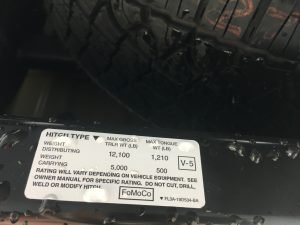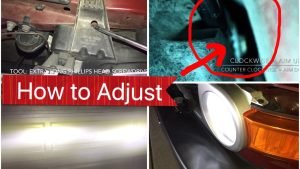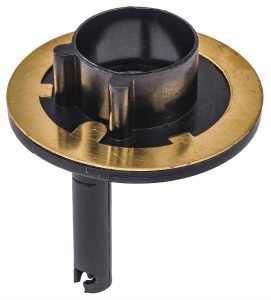
Contents
How to Test a Fuel Pump: A Step-by-Step Guide
Is your car struggling to start, sputtering, or lacking power? A faulty fuel pump could be the culprit. While a mechanic can diagnose the problem, learning how to test your fuel pump yourself can save you time and money. This guide provides a clear, step-by-step process to help you determine if your fuel pump needs replacing. Safety is paramount, so remember to follow all instructions carefully and prioritize your safety.
🛒 Recommended Product
Understanding the Fuel Pump’s Role:
Before we dive into testing, let’s quickly review the fuel pump’s function. It’s responsible for drawing fuel from your gas tank and delivering it under pressure to the engine’s fuel injectors. A malfunctioning pump can lead to a variety of issues, including:
- Difficulty starting the engine.
- Engine stalling or sputtering.
- Loss of power, especially under acceleration.
- Engine hesitation.
Tools You’ll Need:
- A fuel pressure gauge: This is the most crucial tool for accurately testing fuel pressure.
- Sockets and wrenches: You’ll need these to access the fuel pressure test port (location varies depending on the vehicle).
- Shop rags or paper towels: For cleaning up any spilled fuel.
- Safety glasses: Always protect your eyes when working with fuel.
- Gloves: Protect your hands from fuel and potential grime.
- Vehicle owner’s manual: Consult it for specific instructions and locations of components for your car model.
Step-by-Step Fuel Pump Testing:
1. Safety First! Disconnect the negative terminal of your battery. This is a crucial safety precaution to prevent accidental sparks and short circuits.
2. Locate the Fuel Pressure Test Port: Refer to your vehicle’s owner’s manual to find the fuel pressure test port. It’s typically located on the fuel rail, a metal bar that distributes fuel to the injectors.
3. Connect the Fuel Pressure Gauge: Carefully connect your fuel pressure gauge to the test port. Make sure the connection is tight and secure to get an accurate reading.
4. Turn the Ignition Key: Turn the ignition key to the “ON” position (don’t start the engine). Allow the fuel pump to prime. You should hear a brief humming sound, indicating the pump is activating. Observe the pressure gauge. The reading should gradually increase to the specification indicated in your owner’s manual. This is a key indication of whether the pump is functioning.
🛒 Recommended Product
5. Check the Pressure: Once the pressure stabilizes, note the reading on the gauge. Compare it to the manufacturer’s specified fuel pressure range. If the pressure is significantly below the specified range, it indicates a potential fuel pump problem.
6. Engine Run Test (If Necessary): Only perform this step if your gauge allows. Some gauges have the capability to monitor pressure while the engine is running. If so, carefully start the engine and observe the pressure reading. The pressure should remain stable within the specified range during engine operation. Fluctuations could indicate other problems beyond the fuel pump.
7. Release the Pressure: Once you’re finished, carefully release the pressure from the fuel pressure gauge according to the manufacturer’s instructions. Never forcefully release the pressure.
8. Reconnect the Battery Terminal: Once you’re finished with the test, reconnect the negative battery terminal.
Interpreting the Results:
- Pressure within the specified range: The fuel pump is likely functioning correctly. Other issues might be causing your vehicle’s problems.
- Pressure significantly below the specified range: This strongly suggests a faulty fuel pump.
- Pressure fluctuating wildly: This could point to a failing pump, a problem with the fuel pressure regulator, or other fuel system issues.
Common Mistakes to Avoid:
- Ignoring safety precautions: Always disconnect the battery negative terminal before starting any work.
- Not using the correct gauge: Using an incompatible gauge will provide inaccurate readings.
- Incorrectly connecting the gauge: Ensure a secure connection to obtain accurate measurements.
- Forcing the pressure release: This can damage the gauge or other components.
- Ignoring the owner’s manual: Your vehicle’s manual contains crucial information specific to your model.
Conclusion:
Testing your fuel pump is a relatively straightforward process that can significantly help diagnose performance issues. By following these steps and remembering the safety precautions, you can determine if your fuel pump needs replacing or if the problem lies elsewhere. Remember, if you’re unsure about any part of this process, it’s always best to consult a qualified mechanic.
🛒 Recommended Product
FAQ
Q. How can I tell if my fuel pump is bad?
A. Several symptoms indicate a failing fuel pump. These include difficulty starting the engine, a sputtering or hesitant engine, a loss of power, especially during acceleration, a whining noise from the fuel tank area, and a noticeable drop in fuel pressure. If your vehicle stalls frequently or the engine cuts out under load, the fuel pump might also be the culprit.
Q. What tools do I need to test a fuel pump?
A. You’ll need a fuel pressure gauge that’s compatible with your vehicle’s fuel type (gasoline or diesel). You may also need a fuel pressure testing adapter to connect the gauge to the fuel rail. Safety glasses and gloves are essential for working with fuel. Depending on the testing method, you may need a multimeter to check the pump’s electrical connections. Consult your vehicle’s repair manual for specific requirements and safety precautions.
Q. How do I check the fuel pressure?
A. First, consult your vehicle’s repair manual to find the correct fuel pressure specifications and the location of the fuel pressure test port. With the engine off, connect the fuel pressure gauge to the test port. Then, crank the engine. The gauge should show a reading within the specified range. If the pressure is low or doesn’t build up, the fuel pump may be faulty. Remember to release the pressure safely after the test, often by using a pressure release valve on the gauge itself.
Q. Can I test the fuel pump’s electrical circuit?
A. Yes, you can. With the key in the “on” position (not starting the engine), use a multimeter to check for power at the fuel pump’s electrical connector. You should have battery voltage. If no power is present, you need to trace the wiring back to identify a possible fault in the circuit, which might include a blown fuse or a faulty relay. If you have power at the connector but the pump isn’t working, the pump itself is likely the problem.
Q. Is it safe to test the fuel pump myself?
A. Testing a fuel pump involves working with highly flammable fuel. It’s crucial to follow all safety precautions, including working in a well-ventilated area, avoiding sparks or open flames, wearing safety glasses and gloves, and properly releasing fuel pressure after the test. If you are uncomfortable performing this test yourself, or if you’re unsure about any aspect of the process, it’s best to take your vehicle to a qualified mechanic.
Q. How much does it cost to replace a fuel pump?
A. The cost of replacing a fuel pump varies greatly depending on the vehicle’s make, model, and year, as well as the labor costs in your area. In some vehicles, the fuel pump is easily accessible; in others, it might require extensive disassembly of parts, significantly increasing labor costs. It is recommended to get several quotes from reputable mechanics or auto repair shops before deciding on a repair.
Q. What should I do if I suspect a faulty fuel pump but the pressure test seems normal?
A. If fuel pressure readings are normal, the problem might not be the fuel pump itself. Other potential causes of similar symptoms include a clogged fuel filter, a faulty fuel pressure regulator, or issues with the engine’s computer system (ECU). Further diagnostics might be needed to pinpoint the exact cause of the problem, potentially involving a professional mechanic and diagnostic tools.
Related Articles
How Much to Fix Fuel Pump
How Much Does it Cost to Fix a Fuel Pump? A Comprehensive Guide A malfunctioning fuel pump can leave you stranded, so understanding the costs associat…
How Much Is Fuel Pump Replacement
How Much Is Fuel Pump Replacement? A Comprehensive Guide Replacing a fuel pump is a significant car repair, and understanding the cost beforehand can …
How Much to Replace Fuel Pump
How Much Does It Cost to Replace a Fuel Pump? A Comprehensive Guide A failing fuel pump can leave you stranded, so understanding the cost of replaceme…
Affiliate Disclosure: As an Amazon Associate, I earn from qualifying purchases made through links on this site.







